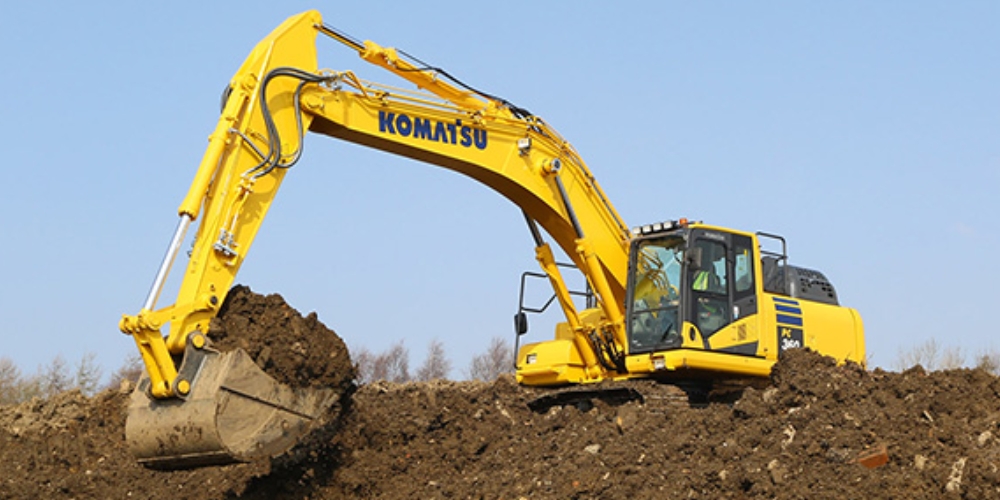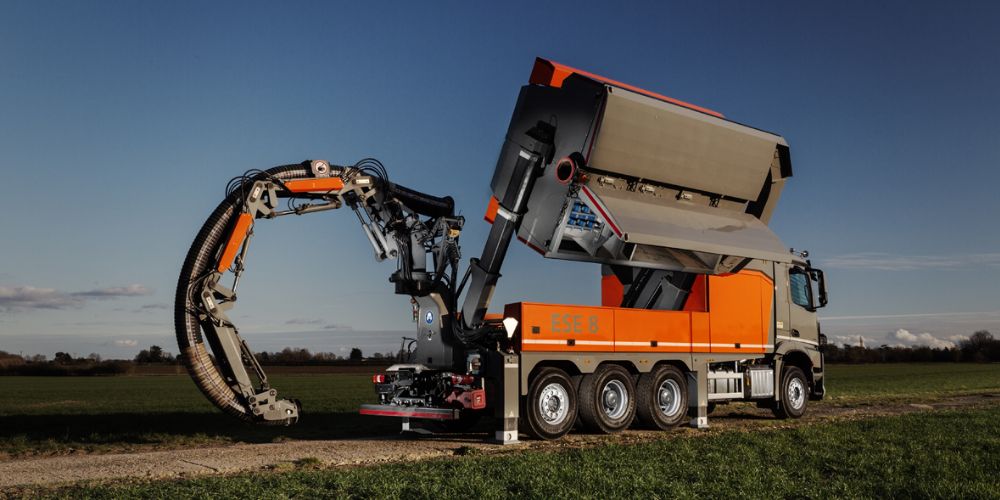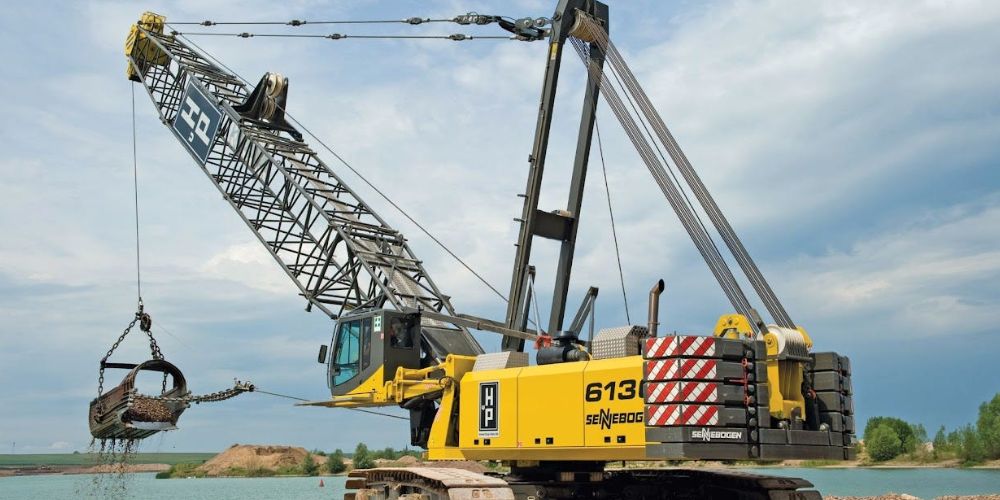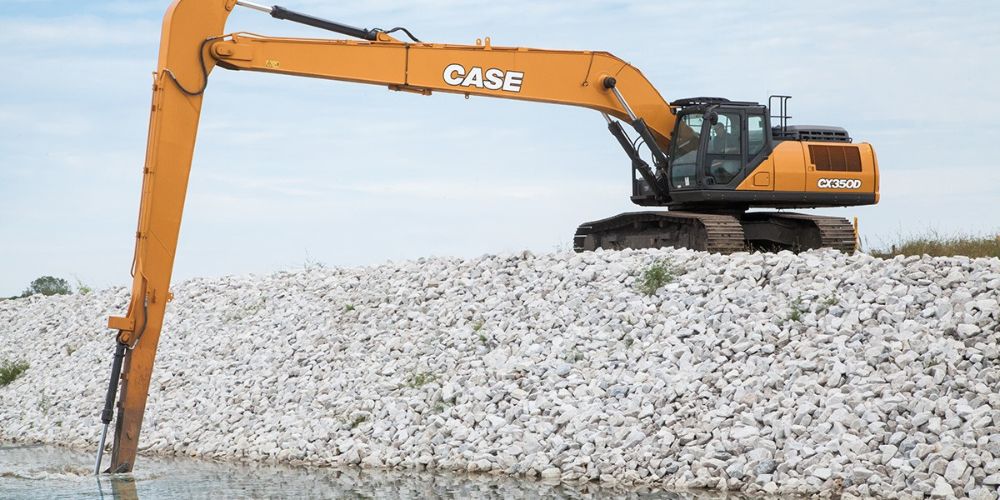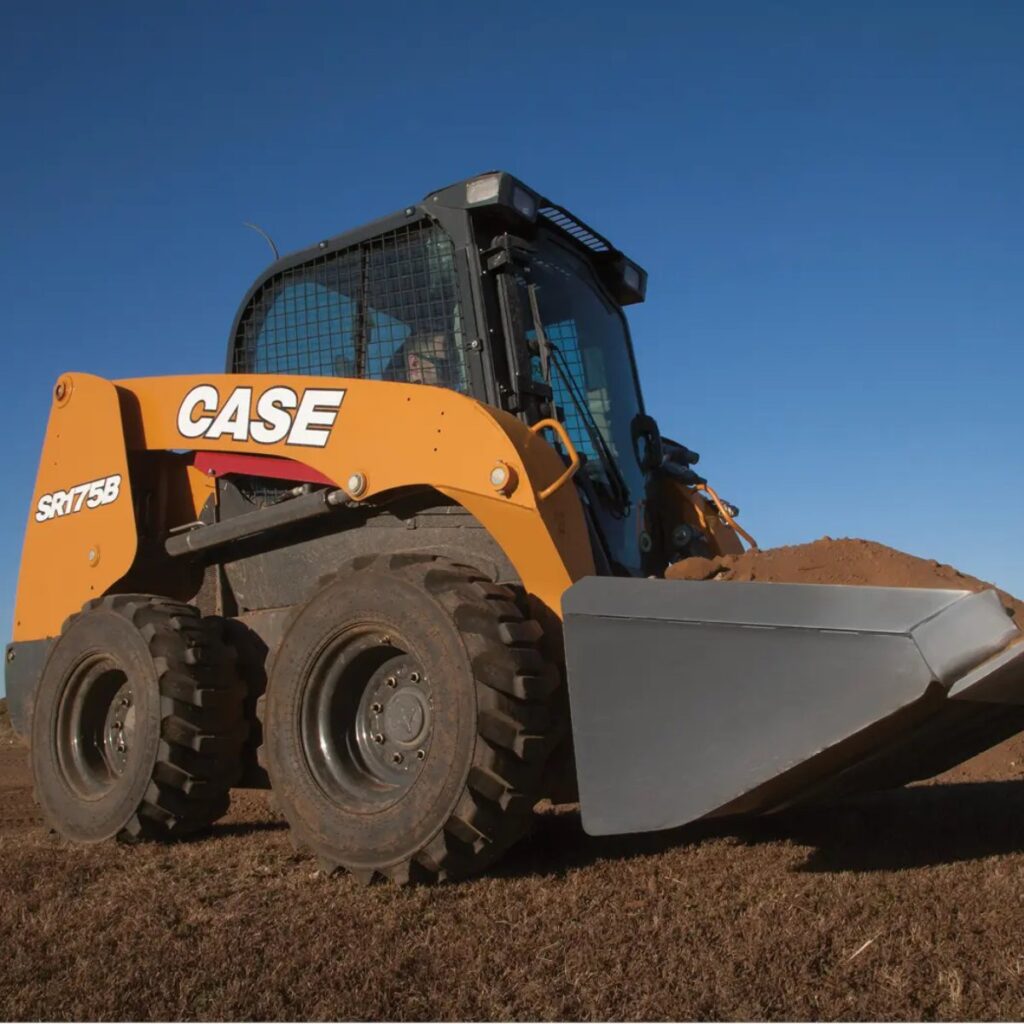Table of Contents
Our 5 Best Excavators
Thinking of the modern construction industry without excavators will not only be a nightmare but the entire industry will come to a standstill without excavators. Imagine if this invaluable machine wasn’t designed what would happen? Engineering such an efficient machine has not only been extremely productive but considerably reduces the time and human effort required for construction works.
Excavators are indispensable machines in the construction industry that are not only used for earthmoving but employed for general construction and utility work, demolition, material handling, landscaping, river dredging, and also in mining projects. Excavators can be used to load and dump, drive piles, grade a jobsite, and execute multiple heavy-duty tasks. All these tasks can be achieved simply by replacing out the bucket with the other desired attachment.
Different excavators perform different jobs depending upon their size and make. The small size excavators usually handle drilling and digging and are suitable especially for urban construction sites where space is an issue while the larger ones are engineered with some modified tools for heavy-duty projects.
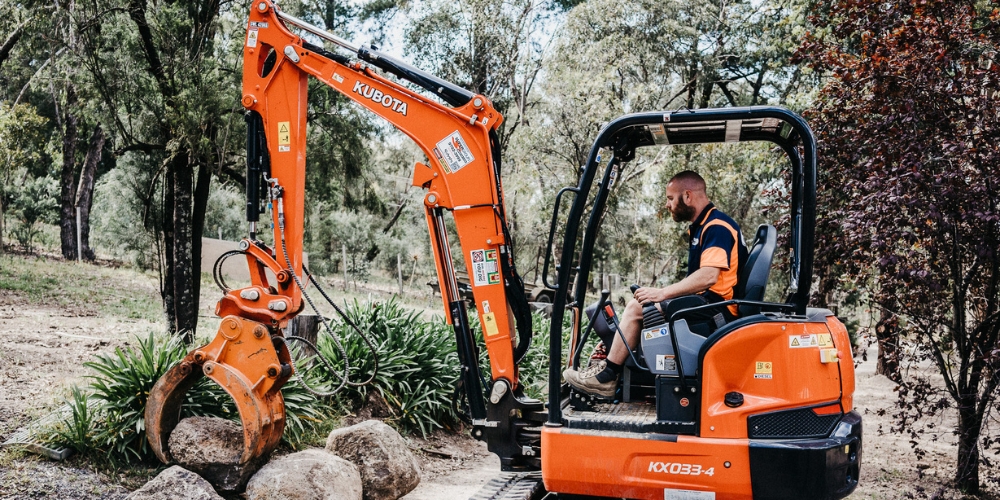
The Cable and Hydraulic Excavators
Earlier excavators were equipped with cables or wire ropes for their digging control but the modern construction industry counts more on hydraulic system excavators for efficient operations and better mobility. Typically, these efficient machines are tracked, however some variants come with wheels.
Cable excavators are self-powered machines that work using a succession of steel wires and cables to move the main parts. Their unique feature is that they can be fitted with a crane to efficiently accomplish heavy tasks.
Modern hydraulic excavators consist of two major segments, the house, and the undercarriage. The house comprises the cab, the engine, the boom, the bucket, and the counterweight that balances the force of digging. Hydraulic excavators work by using levers to regulate the movement of the hydraulic fluid to push the cylinders that in turn control the bucket and boom of the excavator.
Before we get started to know about the best excavators let us dive deeper to have a fair knowledge about excavators:
Most Commonly Used Excavators
Excavators are segmented considering their size, configuration, and attachments with a diversity of shapes that can work with unique skill sets in different projects and environments. Also, speed and working conditions like the type of soil and space where they are employed determine the classification of excavators. The most commonly used excavators are:
Crawler Excavators
Crawlers are machines with endless chain track systems and hydraulic power mechanisms to remove heavy debris and soil. These excavators are best suited for mining, trench digging, and landscape grading as well as heavy-duty construction jobs. The chain wheel system has an impressive ability for grading uneven terrain and hilly zones.
Crawlers are compact but slower when compared to other excavators, yet they offer stability, flexibility, and an overall greater balance. These crawling machines are engineered in different sizes ranging from rubber-tracked smaller size excavators to heavy equipment handling steel tracked machines.
These crawling excavators move upon the same rotating wheels used in tanks engineered for armies, but crawling excavators can also excavate, pick and transport excavated materials as they move
Suction Excavators
The suction excavators are wheeled machines ideal to clean soil, dirt, and debris using underground jets and high-pressure vacuum for underground projects and other delicate excavation projects.
The suction excavators also known as vacuum excavators use high-powered fans with a suction pipe that has the potential to let air up to 400 horsepower and subsequently excavate up to around 45 meters below the soil.
The vacuum is created by the sharp teeth present at the edge of the pipe and can excavate the debris at an amazing speed of 200 miles per hour. These excavators are also featured with releasing water jets to slacken the soil and a suction excavator hose to get rid of below surface materials without employing any human effort in the excavation process.
Dragline Excavators
Dragline excavators are huge pieces of digging machinery that operate with a different process and are mainly put into work for civil engineering and mining projects. These excavators use a dragline system, and a hoist rope to excavate earth.
Dragline excavator lifts and lowers the large bucket to clear the earth using chains and ropes that remain attached to a large truss structure. The system employs a hoist rope attached to a bucket via a hoist coupler and the other end of the bucket is pinned to a dragline that extends between the bucket and the cab.
A dragline excavator is a unique type of machine that is engineered not only in portable, smaller versions but also in huge variants, often assembled at sites only.
Long Reach Excavators
Long Reach excavators are similar to crawler excavators in their functioning but call for specialized situations due to their extended arms. Also, these types of excavators can be fitted with multiple attachments as per the need of the projects.
These extended armed big-classed machines are beneficial in especially tricky demolition work of high-rises in urban areas. Jobs like clipping, cutting, and crushing as well as dredging are also undertaken efficiently using long reach excavators.
Long reach equipment attached to this excavator can have a horizontal extension of above 100 feet to effectively perform in tough demolition projects and heavy-duty digging.
Skid Steer Excavators
Skid steer excavators also called skid steers are smaller and too compact that most people associate them with compact track loaders and wheeled loaders instead of real excavators. Typically, these excavators are used in debris removal, digging pools, and site cleaning, in addition to their primary use of residential projects in those sites where materials are spread out and job sites are smaller and harder to navigate.
Skid steer excavators come with booms and buckets, unlike other excavators, that are in the opposite direction of the driver. This unique alignment lets these attachments go over the cab instead of moving around it. This structuring of the machine makes it effective for a full 360-degree turnaround without having to move backward and forward in slender areas.
Difference Between an Excavator and a Backhoe
A backhoe is often confused with an excavator. Backhoes are common fixtures on construction sites and they have digging and lifting capabilities similar to that of an excavator; an excavator is a heavy piece of construction equipment that has the ability to create a channel or hole in the soil, and subsequently, remove the earth from the area. The major difference between backhoes and excavators is mainly in their functionality, size, and weight.
The excavators and the backhoe loader hold a command in the heavy construction equipment industry where both have their significant importance. While both these machines are capable of accomplishing most tasks, some prominent differences between the two that must be considered while buying or employing them at the construction sites are:
- Typically, the excavator is the largest equipment of construction machinery weighing up to 200,000 pounds. The rotation of a full 360 degrees is possible because of the bucket and boom design it has, while a backhoe is a smaller machine when compared to an excavator and shares more similarities in appearance with a tractor.
- Excavator is constructed with a bucket, boom, rotating engine cab, and a wheeled or tracked undercarriage and can accomplish various jobs simply by altering the front attachment. On the other hand, a backhoe is made with a digger bucket at the end of a two-piece articulated fixed arm that is made up of the ‘dipper’ and the ‘boom’ and remains fixed to the back of a tractor.
- The chassis and boom in an excavator can rotate 360 degrees simultaneously whereas the backhoe can rotate left and right only to 200 degrees.
- While the excavator is used on most construction sites; a backhoe is most commonly used in industrial scenarios and farming.
- Excavators are capable of undertaking medium-heavy workloads, on the contrary, a backhoe is used for light to medium workloads
Let us dive directly into understanding the best excavators of 2021:
Our 5 Best Excavators of All Time
Excavators designed to handle a variety of jobs are an indispensable part of the engineering infrastructure. Excavators are available in different sizes, shapes, and engineering marvels, but whatever the design and make, excavators are vital equipment for the construction industry.
Excavators are designed with their own strength and can be specialized for specific jobs in the construction industry, each excavator can be functional to various circumstances using different attachments, here we take a look at the 5 best excavators:
1. Komatsu
Komatsu, a Japanese company primarily engaged in the manufacture of construction and mining equipment produces world-class excavators engineered with excellent quality materials to endure the hardest working conditions. Komatsu advanced technology excavators offer built-in 3D GPS systems and up to six machine working modes to produce outstanding lifting efficiency, faster cycle times, specific bucket schedules, and easy multifunction motions.
Komatsu manufactures a complete range of these machines, from small to mid-size, to large as well as mining excavators. Whatever the size, Komatsu excavators feature versatility and depict a high performance, and especially when it comes to large and mining excavators, these can be employed to do a variety of tasks efficiently.
2. Caterpillar
Built with excellent safety features caterpillar excavators are trusted globally and have a significant market share. The product portfolio of Caterpillar starts from mini models to the world’s largest excavator model. In addition to having the latest technology, Caterpillar excavators earn the trust of being durable and easy to maintain. Although headquartered in Illinois, US, Caterpillar did manufacture construction equipment in Tullamarine, Australia up to 2015 and has earned its place as one of the most-loved excavators in Australia.
With a great variety of models that can be used differently for multiple jobs in the construction industry delivering top performance, caterpillar excavators come with various attachments and varied capabilities, however, the models may vary from region to region.
3.Hitachi
Engaged in manufacturing and marketing of an extensive range of transportation and construction machinery, Hitachi Construction Machinery Company started its operations in 1970 as a subsidiary of Hitachi Group. The product basket among excavators includes compact, medium, and large as well as reduced-tail swing and wheeled excavators, in addition to loading shovels.
The kind of engineering and manufacturing focus Hitachi has since its inception is backed by the reputation they have earned for highly reliable machines that deliver smooth, powerful performance. Engineered to deliver top performance, Hitachi excavators offer versatility and fuel efficiency at minimum outlays. Hitachi’s largest mining shovel in the fleet, the EX8000-6, offers versatility and delivers incredible arm crowding and horsepower making no job too big for this excavator.
4. Doosan
Having a core competence in the manufacture of heavy construction equipment Doosan Infracore a Korean multinational has global operations. The product portfolio of the company, in addition to its famous crawler excavators and other variants of high-performance excavators include articulated dump trucks, compact loaders, mini-diggers, and wheel loaders.
Doosan excavators ranging from mini to medium and large excavators including wheel variants offer high fuel efficiency, convenient control, and great performance no matter how harsh the conditions are. The company claims the best customer satisfaction with their small excavators that combine powerful digging force and convenience, and the medium and large excavator is guaranteed to deliver maximum productivity, excellent durability, and fuel economy.
5. VOLVO
With around 190 years of experience at its back, Volvo CE has become a leading global manufacturer of premium construction equipment. Volvo Construction Equipment, one of the world’s most popular excavator companies is a subsidiary of renowned Swedish carmaker Volvo. The company manufactures a wide range of reinforced and durable equipment with flexible configurations, including backhoes, hydraulic excavators, wheel loaders, asphalt compactors, and many other construction equipment and has operations all over the globe.
Volvo’s excavators are safe and easy to operate, designed with responsive advanced hydraulics for Superior comfort and control. The crawler excavator is engineered to deliver long-lasting performance, unrivaled fuel efficiency with exceptional lifting capacity and strength.
The Final Thought
While excavators are versatile machines that can perform a variety of jobs, it is vital to understand the more intricate use of different excavators for their specific roles. Having an elaborate knowledge about these indispensable machines can not only deliver smooth and powerful performance but accomplish the projects without delays and unwanted hazards.

